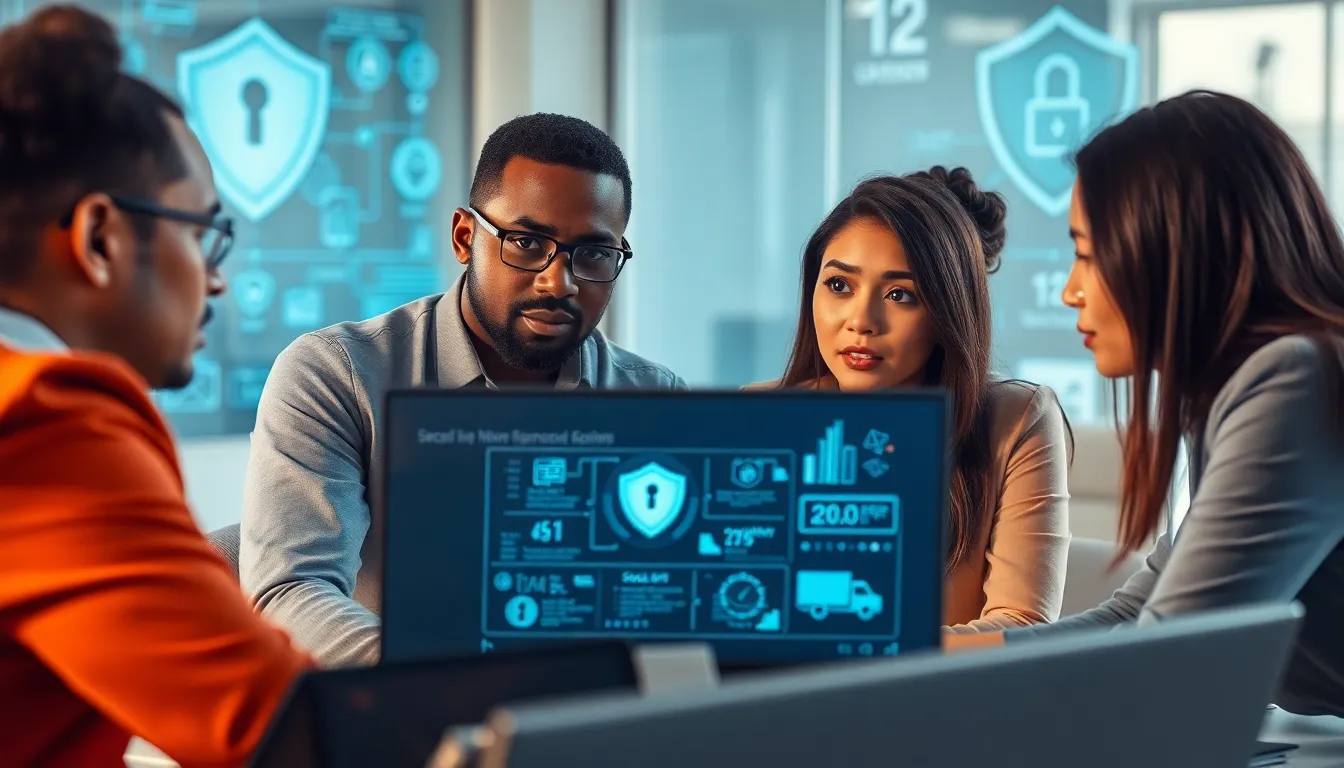In a world where your toaster might be plotting against you, tech security has never been more crucial. With hackers lurking around every digital corner, it’s essential to protect your gadgets like they’re your most prized possessions—because they just might be. From smartphones to smart fridges, every device connected to the internet is a potential entry point for cyber mischief.
Table of Contents
ToggleOverview of Tech Security
Tech security encompasses measures and processes designed to protect devices and networks from unauthorized access, damage, or theft. Smart devices, like toasters and fridges, require attention since they may open gateways for cyber threats. Internet-connected gadgets can function as entry points, making them targets for malicious activities.
Data breaches highlight the urgency of robust tech security. Research shows that over 60% of small businesses experience cyberattacks annually. Security strategies must safeguard personal information and proprietary data from these threats, ensuring that sensitive details remain confidential.
User education plays a vital role in tech security. Individuals must understand the importance of strong passwords and multi-factor authentication. They should recognize that simple, but effective practices, such as updating software regularly, drastically reduce risks.
Firewalls and antivirus software represent core components of tech security frameworks. Firewalls act as barriers, filtering unwanted traffic that could exploit vulnerabilities. Antivirus programs detect and eliminate malicious software, preventing damage to systems.
Collaboration between manufacturers and consumers is essential for effective tech security. Tech companies need to incorporate security measures in their products from the design phase. Consumers ought to stay informed about updates and security patches for their devices.
Investment in tech security isn’t just a precaution; it’s a necessity. Organizations suffering from data breaches face an average cost of $4.24 million per incident. Therefore, prioritizing security measures significantly enhances resilience against cyber threats.
Common Threats to Tech Security

Various threats challenge tech security, affecting individuals and organizations alike. Recognizing these risks is crucial for developing effective protection strategies.
Malware and Ransomware
Malware encompasses various malicious software types, including viruses, worms, and spyware. Ransomware specifically locks users out of their data, demanding payment for restoration. Many organizations face significant consequences due to ransomware attacks, with response costs averaging $1.85 million. Keeping systems updated and installing reliable antivirus solutions significantly reduces exposure to malware. Additionally, user education surrounding suspicious downloads remains vital.
Phishing Attacks
Phishing attacks exploit human trust, tricking individuals into sharing sensitive information. These scams often present as legitimate emails or messages, encouraging users to click on harmful links. Approximately 90% of data breaches stem from phishing tactics, highlighting the urgency of recognizing these threats. Implementing training sessions and encouraging skepticism can enhance awareness. Multi-factor authentication adds another layer of security against unauthorized access.
Insider Threats
Insider threats involve current or former employees who intentionally or unintentionally compromise security. Many organizations underestimate this risk, forgetting that insiders often possess sensitive information and access. Approximately 34% of data breaches originate from insider threats, pointing to the need for comprehensive security policies. Regular audits and monitoring can detect unusual behavior among employees. Creating a culture of security awareness ensures everyone contributes to overall tech safety.
Best Practices for Enhancing Tech Security
Implementing best practices enhances tech security and minimizes vulnerabilities significantly. Consider the following strategies crucial for maintaining robust security.
Regular Software Updates
Regular software updates close security gaps and protect devices from threats effectively. Keeping operating systems, applications, and firmware up to date mitigates risks posed by cybercriminals. Organizations often overlook the importance of timely updates, leading to potential exploitation of existing vulnerabilities. Cybersecurity experts recommend scheduling updates weekly. Automated updates further streamline this process, ensuring devices always have the latest protections.
Strong Password Policies
Strong password policies form the backbone of tech security. Utilizing complex passwords significantly reduces the risk of unauthorized access. Encourage the use of at least 12 characters, including upper and lower case letters, numbers, and symbols. Additionally, implementing password managers assists individuals in generating and storing unique passwords securely. Organizations should enforce regular updates of passwords, ideally every three months, to maintain a fortified security posture.
Employee Training and Awareness
Employee training and awareness campaigns foster a culture of security consciousness. Regular sessions educate staff about common threats like phishing attacks, which account for about 90% of data breaches. Understanding these threats enables employees to identify suspicious emails and links, reducing the risk of infiltration. Organizations that prioritize training create an informed workforce, enhancing overall security. Annual refreshers reinforce learning and keep security at the forefront of everyone’s mind.
Emerging Trends in Tech Security
The landscape of tech security continually evolves, driven by innovation and emerging threats. Two significant trends shaping this field are AI and machine learning, along with blockchain technology.
AI and Machine Learning in Security
AI and machine learning enhance security measures by analyzing massive datasets for unusual patterns. These technologies detect potential threats more quickly than traditional methods, improving response times. Organizations utilizing AI-powered security solutions find that they can identify and neutralize threats before they escalate. Real-time data analysis enables predictive capabilities, allowing firms to anticipate attacks based on historical data trends. AI automates mundane tasks, freeing security teams to focus on strategic initiatives, thereby increasing overall operational efficiency.
Blockchain Technology
Blockchain technology provides a decentralized approach to secure data transactions. This approach enhances security by making unauthorized data alterations nearly impossible due to its transparent, immutable nature. Organizations leveraging blockchain can track alterations, ensuring that any tampering is easily detectable. Through smart contracts, blockchain automates and enforces compliance with security protocols, reducing human error risks. Firms that adopt blockchain technology often experience improved trust and accountability across their networks, making it a valuable asset in the ever-evolving tech security landscape.
Tech security is no longer an optional consideration; it’s a vital necessity in today’s digital landscape. As technology continues to evolve and integrate into daily life, the potential risks associated with cyber threats grow exponentially. Organizations and individuals alike must prioritize security measures to protect sensitive information and maintain trust.
Investing in robust security strategies and fostering a culture of awareness can significantly reduce vulnerabilities. Embracing emerging technologies like AI and blockchain can further enhance security efforts, providing innovative solutions to combat evolving threats. Staying informed and proactive is essential for navigating the complexities of tech security in an increasingly interconnected world.








